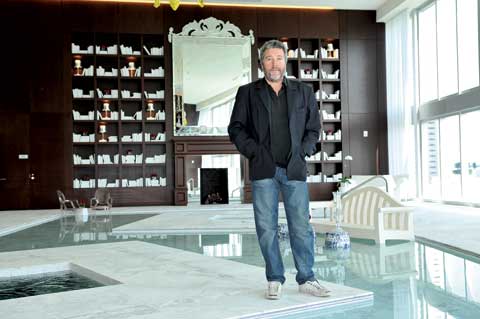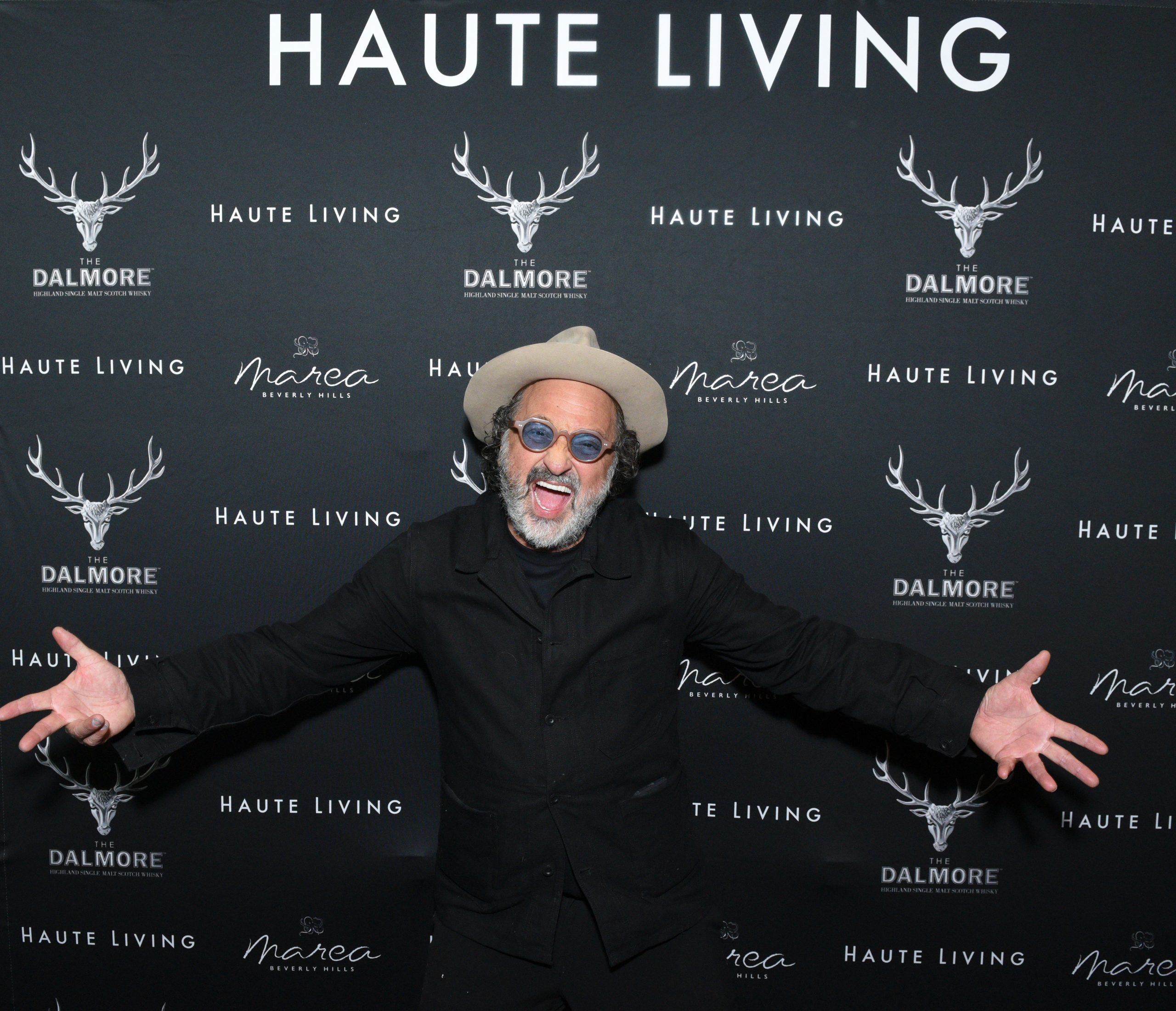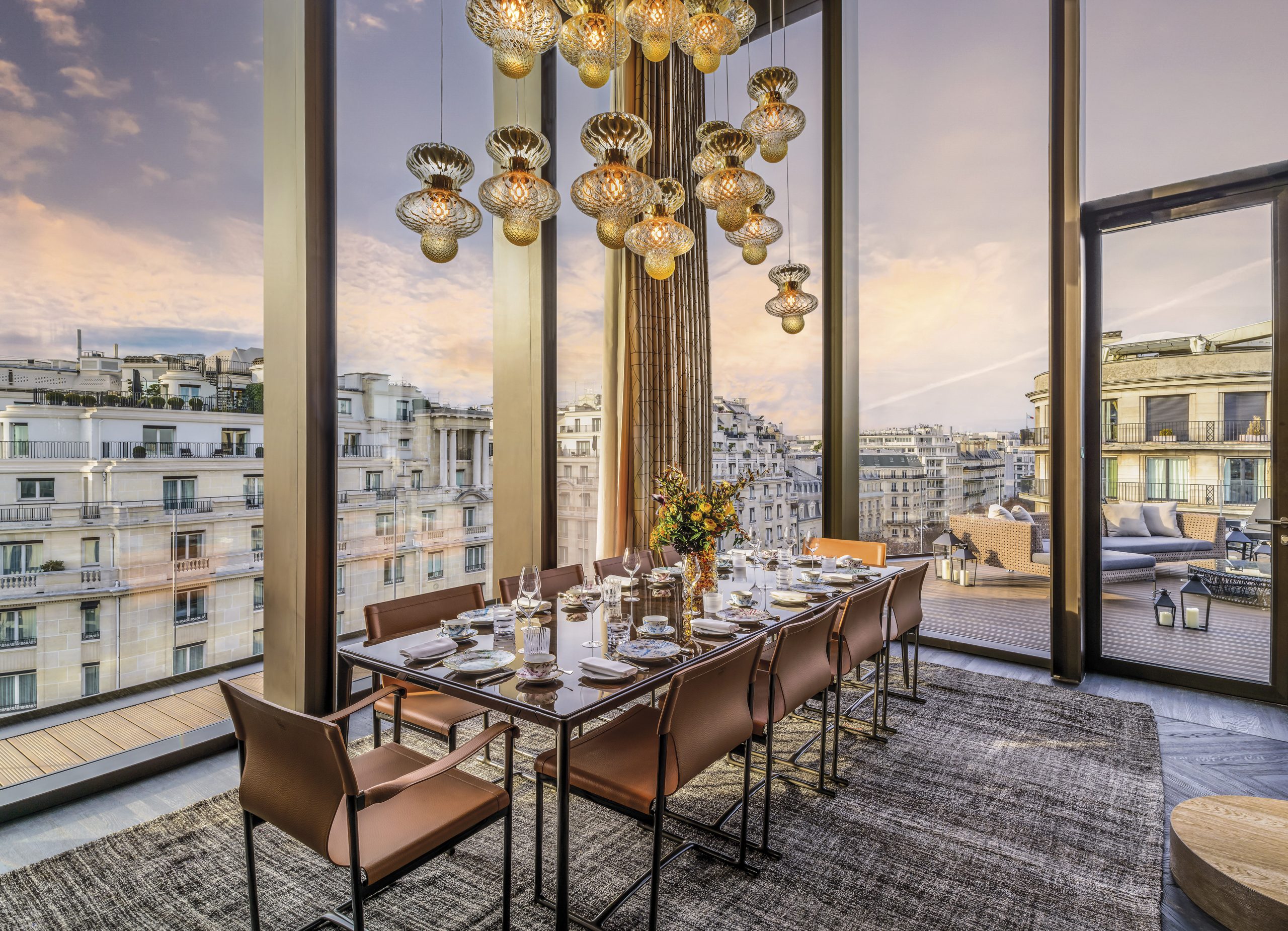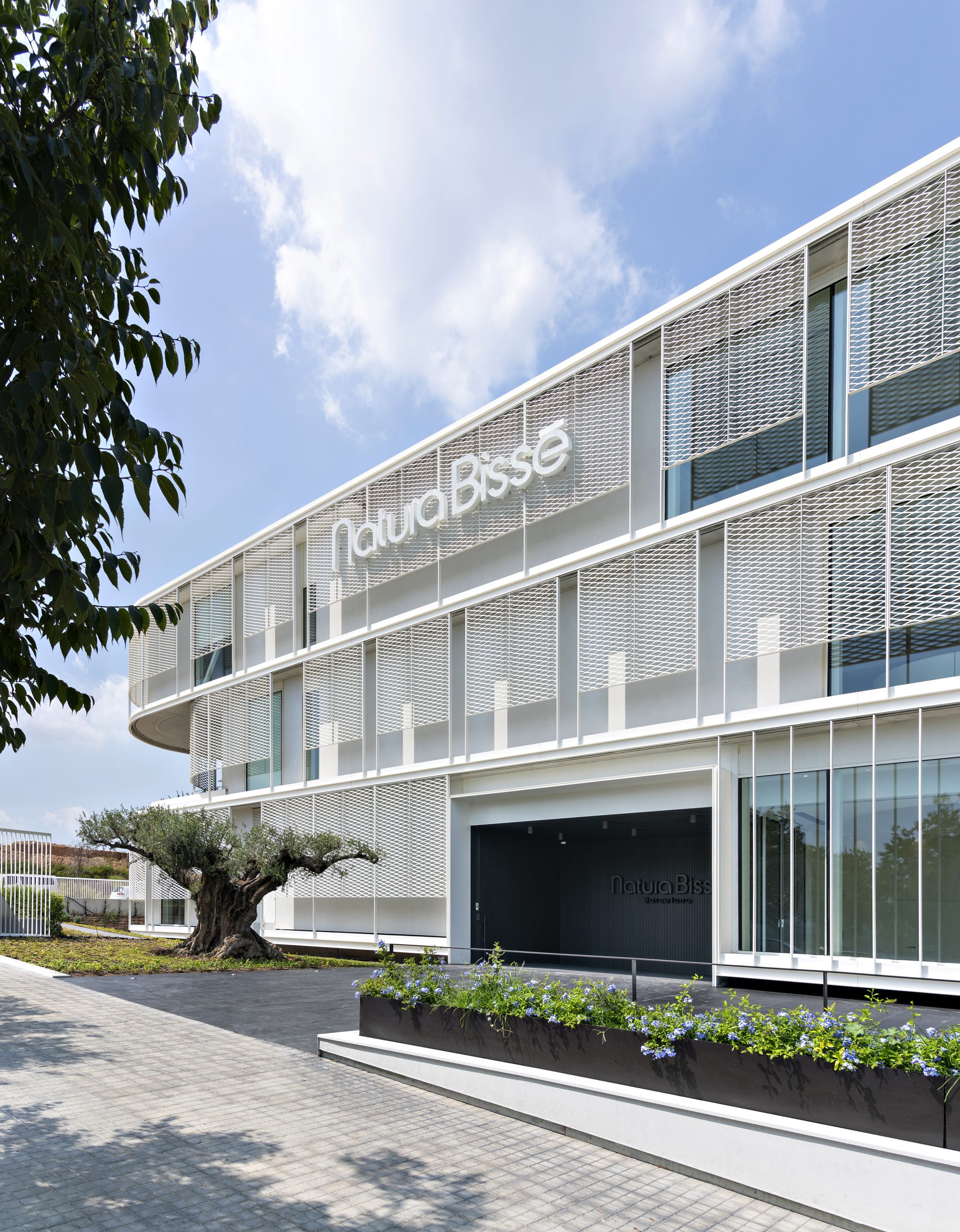The Iconic Philippe Starck

[highlight_text] “My greatest project is always what’s next. When I see a project finished, I see only how I was weak, how I was lazy, how I was fickle.” [/highlight_text]
“Today, everybody is full of trends, but I follow only my trends.” ~Philippe Starck
That quote exemplifies the life and work of the legendary designer. Starck is often the mastermind behind what is considered trendy across the globe. His influence is apparent in a number of industries, as he is widely recognized as the world’s leading designer of luxury restaurant, hotel, and real estate properties, leading to a global following. The Parisian, who developed his eclectic style at a very young age, infuses his brand of “fun” into designs that span both industries and continents, from toothbrushes to TV sets, toilets to motorcycles. His works are visible in museums around the globe, and he has been the recipient of an array of awards, including Designer of the Year, the Oscar for design. Possibly most notable is he can be credited as the inventor of the modern boutique hotel concept, which was born during his collaborations with Ian Schrager and Morgans Hotel Group.
The tales of Starck underneath his father’s table, seeing the world from a unique perspective and shaping it to his Alice in Wonderland imagination, have been reiterated so many times with so many different versions, it no longer seems like a biography but more like its own design fairytale, one that children of the arts are very familiar with. What makes the story interesting is not the facts themselves, but the fantastical results. Because Starck’s designs always push the limit and always seek to redefine what is. His ability to take an object as mundane as a toothbrush and turn it into a noble, notable object is the reason his name is a household one. An innumerable slew of imitators have popped up in his wake, desperately trying to duplicate a minuscule module of his style, but all have fallen short. The result is a starkness-the anti-Starckness-that pervades the boutique hotel scene, as design hacks hang white flowing curtains on top of white walls and think they have somehow re-created Starck’s magic.
They haven’t. Because what makes Starck his industry’s foremost designer is that he is always at the forefront. From the Delano in Miami Beach to the Peninsula Hotel restaurant in Hong Kong, his projects consistently redefine their category, a trend that is further exemplified by his latest work with Sam Nazarian’s SBE. In 2005, Starck signed an exclusive agreement to design SBE’s restaurants and lounges, which was expanded to include the new hospitality sector that recently opened SLS Beverly Hills. (A local outpost is under construction on Miami Beach with a tentative opening Spring 2010.)
“In many ways, Philippe defined what we’ve come to know as the boutique hotel world,” says Nazarian, owner of SBE. “He’s had a hand in the creation of so many brands around the globe,” which prompted Nazarian to trust Starck with his vision for what will undoubtedly become the industry’s newest trend. “He understands our kind of clientele perfectly,” Nazarian continues. “Who better than him to define the next generation of boutique hotels, which are more luxury and amenity driven?”
While Miami Beach’s Delano-designed by Starck-was one of the first boutique properties that embraced the “hotel lobby as local haute scene” vibe, over the years, hotel operators came to realize that somewhere in that mentality, the hotel guest and hotel amenities were being lost. SLS corrects that oversight, offering a unique dual lobby, with an intimate entrance for hotel guests alongside a public entrance leading to a multi-faceted dining and retail environment. It’s a new concept that will undoubtedly inspire copycats.
Starck’s latest work in Miami is also sure to garner a multitude of imitators, but none will be able to capture its grandeur. ICON Brickell is already being hailed as the designer’s crowning achievement, although he humbly says, “My greatest project is always what’s next. When I see a project finished, I see only how I was weak, how I was lazy, how I was fickle.” At ICON Brickell, Starck is the only one who can see any shortcomings.
The project is a collaboration between Related Group’s Jorge Perez and architect Bernardo Fort-Brescia of Arquitectonica, with design by Yoo by Philppe Starck. The project is referred to as Perez’s “self-proclaimed legacy,” a fitting title for what is undoubtedly the most impressive project in an already impressive portfolio. Likened to New York’s Time Warner, the tri-tower property boasts 1,800 residences in two towers with a Viceroy hotel in the third. Situated at the intersection of downtown Miami and Brickell, the property sits at the mouth of Miami River, offering spectacular vistas of Miami’s expanding skyline.
The designs, which are being heralded as some of Starck’s greatest to date, are striking and bold, contrastingly described by Starck as both out of this world and human, but most importantly as “spectacular.” “The building isn’t my design,” explains Starck. “I make a movie set. I am sort of a movie director; I show people things to make them see a sort of vision, to make people see my vision, make them smarter and intellectual. [With ICON Brickell], I had a lot of room to express myself and make people happy. ICON was easy because it’s big and it gives me a lot of power to express and make people happy.”
Slated to open late February, the property held an exclusive preview during Art Basel 2008, and guests lined the block to be amongst the first to experience the ambiance inspired by the unique designs. The property entrance is marked by a sculpture garden inspired by the Maoi structures of Easter Island, envisioned by Starck as a dark cave illuminated by watchful “eyes.” “I just chose what is not very in style,” he explains of his choice for the structures. “I just make strange.” The unique mammoth faces, which appear on 100 twenty-two-foot-high columns, took shape over the course of a number of months, being carved and painted onto the giant structural columns. “We had to hire a full-time team of security,” explains Perez. “People have been drawn to the columns, and want to get a closer look even while the space is still under construction!” The faces guide guests and residents to separate entrances for the three towers, flanked by Mary Brickell Park to the south and Biscayne Bay to the east.
As is typical in Starck designs, the entranceway seeks to bring the outside in, with a continuing color scheme, 22-foot ceiling, and dramatic yellow glass. The lobby features one of the building’s many public gathering areas, which was one of characteristics that Starck focused on in his designs. “Everywhere, we created space where people are obliged to meet,” he says. “I feel we are in a society where people speak less and less to each other. In ICON Brickell, people will speak, live, and love together, which is important.”
What will undoubtedly be the main gathering space is the impressive-both for aesthetics and engineering strength-two-acre park terrace and pool deck, situated 140 feet above Biscayne Bay. The enormous sanctuary, flanked by the three towers, includes a multitude of unique characteristics, including a freestanding fireplace, mosaic tile carpet, and a sitting area framed by artistic glass panels, intended to serve as an outdoor living room of sorts.
But the center of the attraction is the waterway that runs like a canal across the enormous terrace. The canal is broken into three infinity-edged pools, a reflection pool, an oversized thermal hot tub, and a longer-than-Olympic-sized lap pool. The entire area is covered by a grove of trees, offering coveted shade. “It is a work of technological genius,” says Perez. “The entire floor below is dedicated to a drainage and support system for the trees’ roots.” Due to the expanse of the space, the different “neighborhoods” throughout the elevated park adapt to the varying moods of the residents and guests. A personal favorite is the oversized loungers on the terrace, which are situated facing Biscayne Bay, offering incredible vistas of the skyline from a dizzying exposed height.
But what Perez says is his favorite area in the building-or one of his three favorites-is Club 50, a lavish rooftop lounge and private pool, open exclusively to residents and guests, with talk of possible private memberships being available sometime in the future. The club’s design is courtesy of Kelly Wearstler, the mastermind behind the interiors of the Viceroy hotel tower. Her designs are a complete contrast to those of Starck, utilizing a diverse color palette and intricate details that Wearstler (an Haute Ambassador) is known for. The overall design scheme blends modern sophistication with a dash of exotic flair and timeless East Asian accents. The combination of Starck’s ethereal modernism with Wearstler’s layered sophistication enhances the property’s bold appeal.
Starck is also collaborating with Perez and Brescia on ICON Vallarta, another tri-tower development that is under construction in Puerto Vallarta. But the main thing that has taken hold of his attention right now is ecological design, and he is continually working on a line of products that encourage a sustainable future, such as the Darrieus H-shape Aeolian generator, which was a prototype shown in Milan last year. “I’m very, very happy to become useful,” the designer states, “and to invent technology that is very easy to use and produce. You’ll see this stuff on the shelves of supermarkets. You will buy a beautiful product that will save energy. Suddenly we are all in pursuit of ecological design, to understand and act. Now we can invest in the right technology to be in the fight for ecology, to save energy and not waste energy.” With ideas like these, Starck will continue to redefine the design world, and we can only hope that his imitators will continue to follow.












